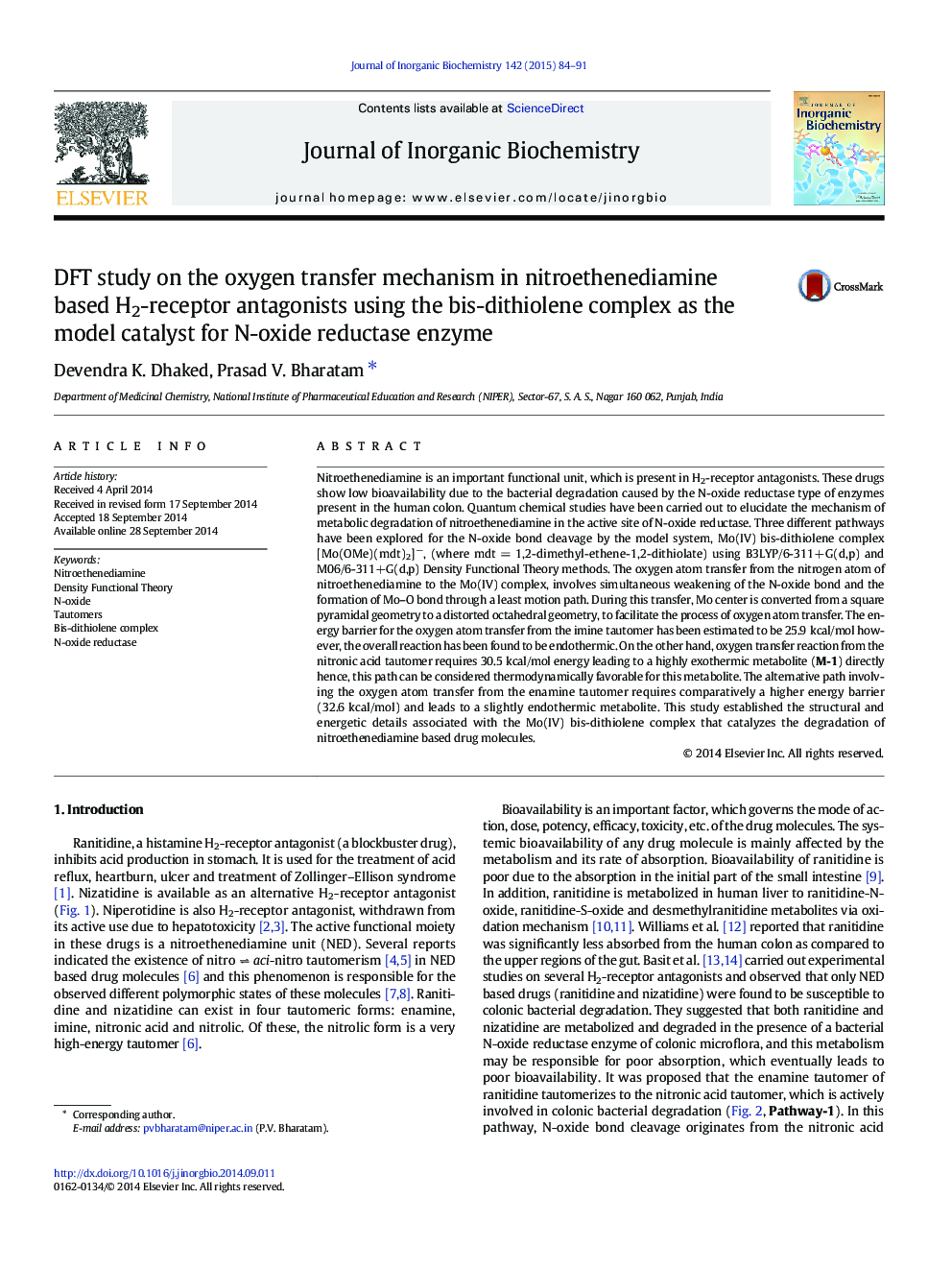| کد مقاله | کد نشریه | سال انتشار | مقاله انگلیسی | نسخه تمام متن |
|---|---|---|---|---|
| 1317223 | 1499445 | 2015 | 8 صفحه PDF | دانلود رایگان |

• Nitroethenediamine based drugs exist in three forms: enamine, imine and nitronic acid
• These are highly susceptible to N-oxide reductase type enzymes
• Cleavage involves oxygen atom transfer to bis-dithiolene complex [Mo(OMe)(mdt)2]−
• Oxygen atom transfer from imine is kinetically favorable
• Both enamine and nitronic acid tautomers form thermodynamically favorable metabolite
Nitroethenediamine is an important functional unit, which is present in H2-receptor antagonists. These drugs show low bioavailability due to the bacterial degradation caused by the N-oxide reductase type of enzymes present in the human colon. Quantum chemical studies have been carried out to elucidate the mechanism of metabolic degradation of nitroethenediamine in the active site of N-oxide reductase. Three different pathways have been explored for the N-oxide bond cleavage by the model system, Mo(IV) bis-dithiolene complex [Mo(OMe)(mdt)2]−, (where mdt = 1,2-dimethyl-ethene-1,2-dithiolate) using B3LYP/6-311+G(d,p) and M06/6-311+G(d,p) Density Functional Theory methods. The oxygen atom transfer from the nitrogen atom of nitroethenediamine to the Mo(IV) complex, involves simultaneous weakening of the N-oxide bond and the formation of Mo–O bond through a least motion path. During this transfer, Mo center is converted from a square pyramidal geometry to a distorted octahedral geometry, to facilitate the process of oxygen atom transfer. The energy barrier for the oxygen atom transfer from the imine tautomer has been estimated to be 25.9 kcal/mol however, the overall reaction has been found to be endothermic. On the other hand, oxygen transfer reaction from the nitronic acid tautomer requires 30.5 kcal/mol energy leading to a highly exothermic metabolite (M-1) directly hence, this path can be considered thermodynamically favorable for this metabolite. The alternative path involving the oxygen atom transfer from the enamine tautomer requires comparatively a higher energy barrier (32.6 kcal/mol) and leads to a slightly endothermic metabolite. This study established the structural and energetic details associated with the Mo(IV) bis-dithiolene complex that catalyzes the degradation of nitroethenediamine based drug molecules.
Nitroethenediamine based drug molecules exist in three tautomeric forms: nitronic acid, enamine and imine. The lower bioavailability of this class of drug molecules may be attributed due to the N-oxide bond cleavage by the Mo(IV) bis-dithiolene catalytic center [Mo(OMe)(mdt)2]− of N-oxide reductase enzyme.Figure optionsDownload as PowerPoint slide
Journal: Journal of Inorganic Biochemistry - Volume 142, January 2015, Pages 84–91